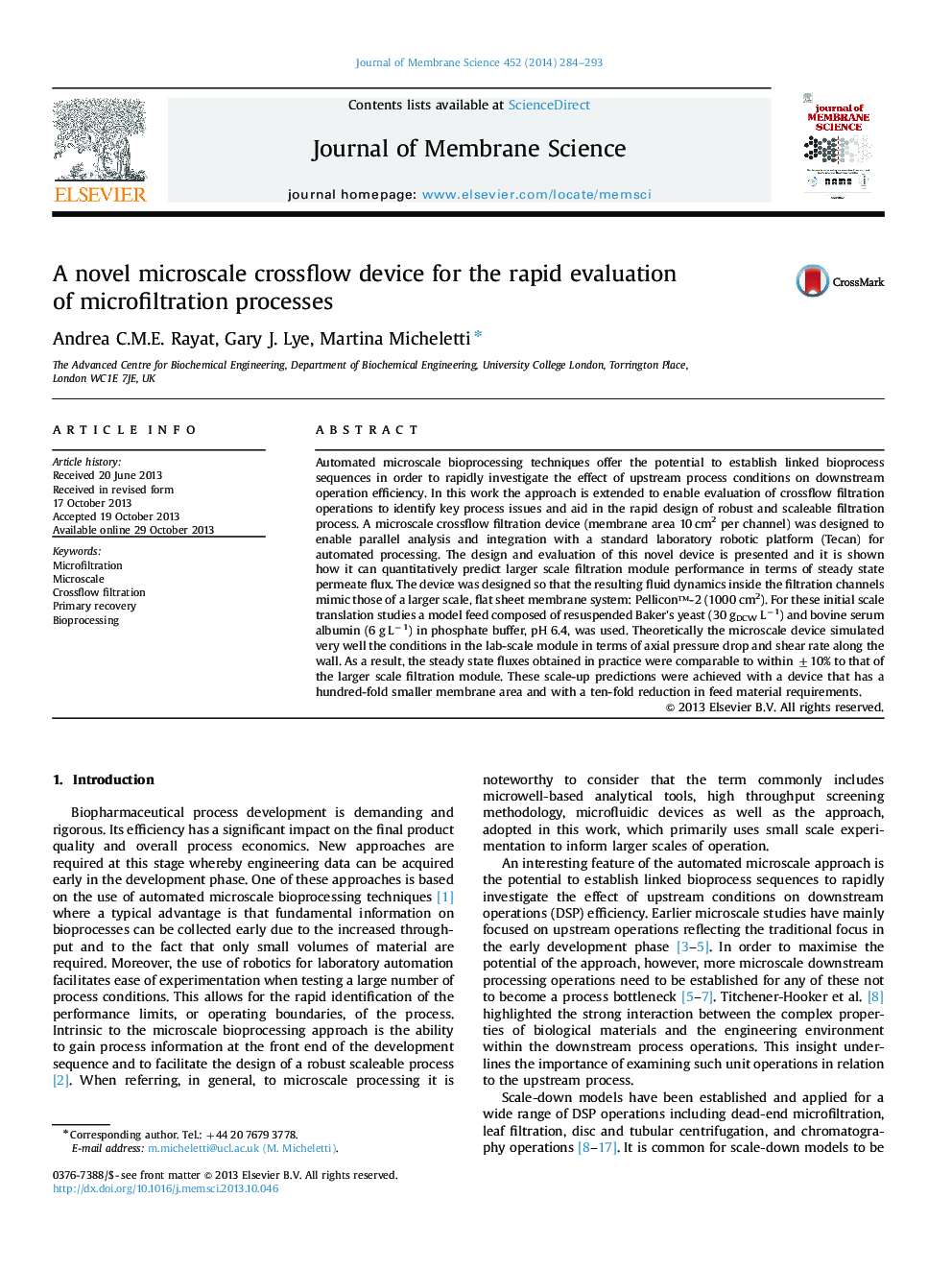| Article ID | Journal | Published Year | Pages | File Type |
|---|---|---|---|---|
| 633716 | Journal of Membrane Science | 2014 | 10 Pages |
Abstract
Automated microscale bioprocessing techniques offer the potential to establish linked bioprocess sequences in order to rapidly investigate the effect of upstream process conditions on downstream operation efficiency. In this work the approach is extended to enable evaluation of crossflow filtration operations to identify key process issues and aid in the rapid design of robust and scaleable filtration process. A microscale crossflow filtration device (membrane area 10 cm2 per channel) was designed to enable parallel analysis and integration with a standard laboratory robotic platform (Tecan) for automated processing. The design and evaluation of this novel device is presented and it is shown how it can quantitatively predict larger scale filtration module performance in terms of steady state permeate flux. The device was designed so that the resulting fluid dynamics inside the filtration channels mimic those of a larger scale, flat sheet membrane system: Pelliconâ¢-2 (1000 cm2). For these initial scale translation studies a model feed composed of resuspended Baker's yeast (30 gDCW Lâ1) and bovine serum albumin (6 g Lâ1) in phosphate buffer, pH 6.4, was used. Theoretically the microscale device simulated very well the conditions in the lab-scale module in terms of axial pressure drop and shear rate along the wall. As a result, the steady state fluxes obtained in practice were comparable to within ±10% to that of the larger scale filtration module. These scale-up predictions were achieved with a device that has a hundred-fold smaller membrane area and with a ten-fold reduction in feed material requirements.
Related Topics
Physical Sciences and Engineering
Chemical Engineering
Filtration and Separation
Authors
Andrea C.M.E. Rayat, Gary J. Lye, Martina Micheletti,
